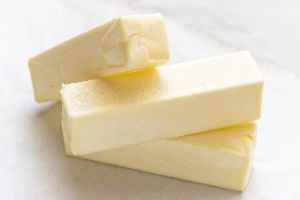Butter is a concentrated source of milk fat (80%) with some water
and nonfat milk solids. It is made from milk, cream or both of these
ingredients. Common salt may or may not be added. Lightly
salted butter is often referred to as “sweet cream butter” and
butter as “sweet butter.”
What Are the Equivalencies
for Butter Measurements?
2 cups =4 sticks= 1 lb =32 tbsp
1 cup =2 sticks=1/2lb = 16 tbsp
1/2cup =1 stick =1/4lb = 8 tbsp
1/4cup =1/2stick =1/8lb = 4 tbsp
FOR THE HEALTH OF IT
Should I butter it or not ?
Should I butter it or not ?
Compared to alternative spreads, butter is minimally processed, and also
contains a range of nutrients that may have positive health-giving properties.
Butter provides what are known as the “fat-soluble” vitamins A, D, E, and K,
which have a variety of essential roles to play in the body. For instance, vitamins
A and D appear to have cancer-protective properties, and vitamin K is important
for the health of the bones and teeth. Butter is also rich in specific fats that
nourish the digestive tract, protect the gut from infection, and are essential for
the manufacture of essential hormones in the body.
contains a range of nutrients that may have positive health-giving properties.
Butter provides what are known as the “fat-soluble” vitamins A, D, E, and K,
which have a variety of essential roles to play in the body. For instance, vitamins
A and D appear to have cancer-protective properties, and vitamin K is important
for the health of the bones and teeth. Butter is also rich in specific fats that
nourish the digestive tract, protect the gut from infection, and are essential for
the manufacture of essential hormones in the body.
FACTS: It takes 21 pounds of fresh, wholesome cow’s milk to make each pound
of butter. Butter contains no trans fatty acids, which, according to recent
studies, are associated with increased LDL (“bad”) and lowers HDL(“good”)
cholesterol. Butter is grated by letter code, AA, A, or B, according to flavor,
texture, aroma and body. AA being the supreme quality. Most butter sold in
supermarkets is AA. Butter is produced essentially the same way it was
thousands of years ago. Made by churning fresh cream until the fats separate
from the liquid (buttermilk), butter is one of the most highly concentrated
forms of fluid milk.
Remember: moderation, eat and enjoy, eliminate from diet when possible.
Natural foods are better than manufactured foods.


Leave A Comment